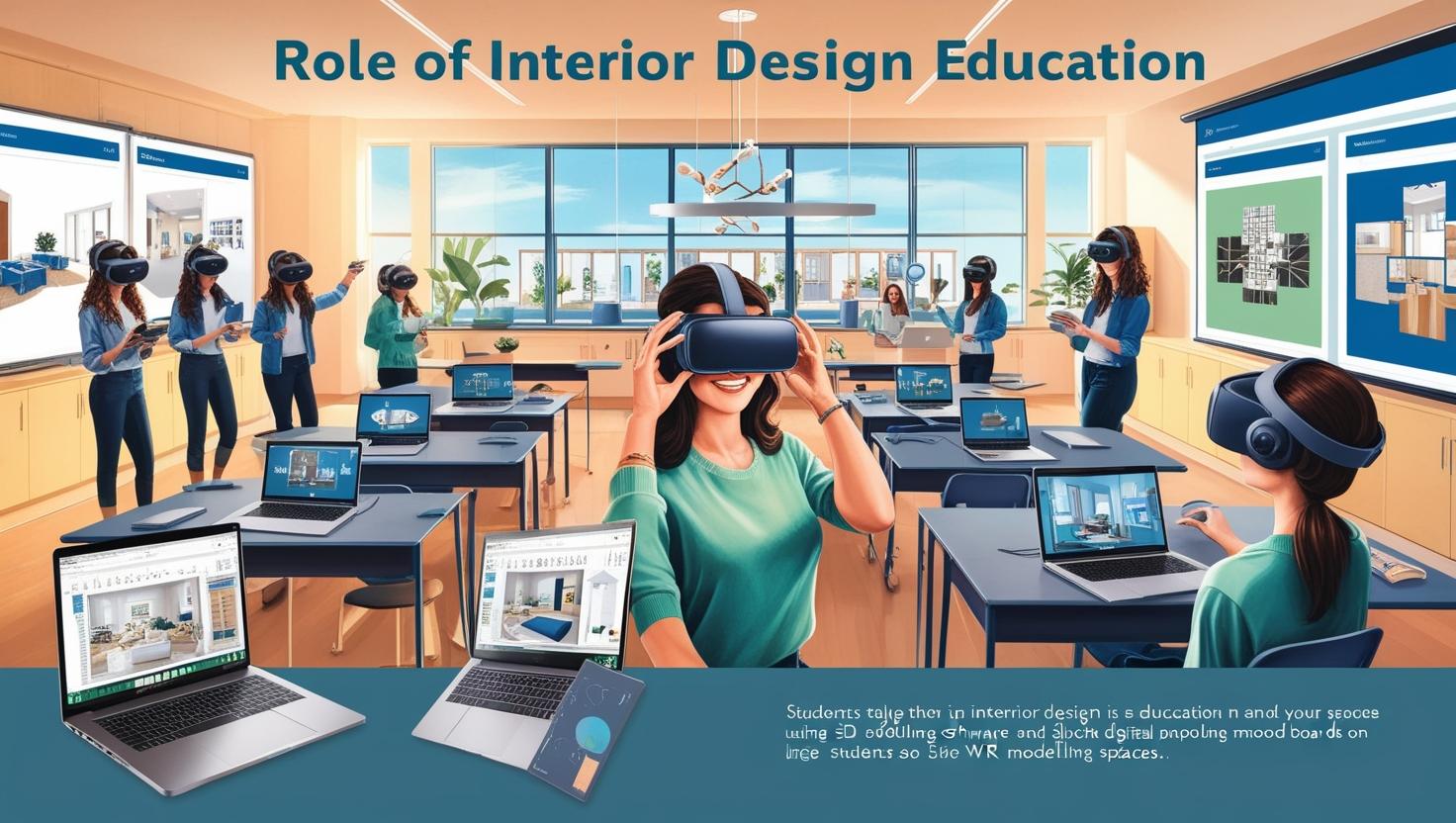Is the Drafting Board Obsolete ? Tech's Transformative Touch on Design Interior Education
Have you ever walked into a designed beautifully space and an felt immediate sense of awe? The perfect blend of color,texture and light – a symphony of aesthetics that speaks to your soul. That magic is the culmination of of years training creative vision and increasingly the power of technology.Today the role of technology in interior design is education nothing short revolutionary of transforming how students learn,how educators teach, and how the future of the industry looks. This isn't just about adding a few software programs the to curriculum; it's about fundamentally changing the way we approach design collaboration and ultimately, the built environment itself.
Beyond the Sketchbook: Digital Tools Shaping the Design Process
Remember those painstaking hours sketching spent floor plans and elevations meticulously erasing and redrawing?I certainly do ! My early design classes were a of whirlwind graphite dust and frustrated sighs. Today's students, however have access to a suite of powerful digital tools that streamline the entire process.
CAD Software: The Foundation of Digital Design
Software like AutoCAD Revit and SketchUp become have indispensable. They allow for precision drafting rapid iteration,seamless and collaboration among team members.Imagine the possibilities: students can effortlessly experiment with different layouts material palettes and lighting schemes instantly visualizing their ideas in 3D.This instantaneous feedback loop accelerates the learning curve,allowing students refine to their designs faster and more efficiently.
The Power of Parametric Modeling
And it's not just about creating static images; parametric modeling allows for dynamic design adjustments. Change one element and the entire design updates accordingly , saving countless hours of manual redrawing and ensuring design consistency. This ability to explore numerous design options is incredibly empowering for both students and educators .
Rendering and Visualization: Bringing Designs Life to
software Rendering such as V-Ray and Lumion, elevates the design process even further .These programs transform 2D plans and 3D models into photorealistic visualizations. Students can present their designs with stunning realism allowing clients and instructors to better understand the proposed space's mood scale,and atmosphere. Remember how I used to struggle to convey the ambiance of a room through hand-drawn sketches ? programs These remove that struggle completely.
The Collaborative Canvas: Virtual Reality and Augmented Reality in Design Education
Technology is redefining how students interact their with designs and each other. Virtual and augmented reality (VR/AR) are no longer futuristic concepts but powerful teaching tools. Imagine stepping *inside* your design before it's even built !
VR Immersive Experiences: Walk Through Your Creations
VR headsets allow students to virtually walk through their designs experiencing the space from different perspectives. This is invaluable for identifying potential issues early in the process , such as awkward circulation patterns or inadequate lighting.Think of it as a virtual walkthrough of your imagination transforming the design critique from a two-dimensional discussion to a truly immersive experience.
AR's Interactive Potential: Overlaying Digital Designs on Physical Spaces
Augmented reality overlays digital designs onto real-world spaces,enabling students to visualize how their designs will interact with existing structures or landscapes.Imagine students using an AR app to superimpose a proposed kitchen renovation onto their own homes giving them a tangible sense of scale and placement before a single hammer is raised. This brings abstract concepts into the realm of the tangible , making learning more intuitive and engaging .
Beyond the Software: Developing Essential Technological Skills
While mastering CAD software is crucial a successful interior designer needs a broader technological skillset. This includes proficiency in project management software, digital communication tools and online marketing platforms .
Project Management: Keeping it Organized
Tools like Asana and Trello are essential for managing complex projects tracking progress and collaborating effectively with clients and contractors.Learning to effectively manage a project technology using is a skill students need to excel in today’s fast-paced industry . Students not only create beautiful designs but they also learn the vital skills necessary to deliver and manage them successfully.
Digital Communication and Marketing: Showcasing Your Work
The ability to present effectively designs through digital platforms is critical for showcasing work and attracting clients. Building a strong online portfolio managing social media and creating compelling marketing materials are invaluable skills that educators must integrate into the curriculum . The days of relying solely on printed portfolios are quickly fading.
Rethinking the Classroom: Integrating Technology into the Curriculum
The integration of technology in interior design education isn'just t about adding new software; it's about reimagining the teaching methodology itself .It's about moving beyond passive learning to engage students in active hands-on experiences.
Flipped Classrooms and Online Learning: Flexibility and Accessibility
Flipped classroom models where students engage with materials online before class, create more time for collaborative projects and in-depth discussions. This also increases accessibility,to catering students with varying learning and styles schedules .
Gamification and Interactive Simulations: Engaging Learning Experiences
Integrating game mechanics and interactive simulations can significantly improve student engagement .Imagine a virtual design challenge where students compete to create the most sustainable or aesthetically pleasing space. This fosters creativity problem-solving skills , and healthy competition .
The Ethical Considerations: Responsible Tech Integration
As technology becomes more prevalent in design education it's crucial to consider ethical the implications .
Digital Divide and Accessibility: Ensuring Equitable Access
Not all students have equal access to technology and reliable internet connections.Educators must address this digital divide by providing access to resources and ensuring that curriculum design remains accessible to all learners. Equitable access is not only a social responsibility but it's also crucial to fostering a diverse and inclusive design community .
Sustainability and Environmental Impact: Designing with Responsibility
The use of digital tools inevitably consumes energy and resources. Educators have a responsibility to foster mindful technological practices among students. This means promoting efficient software usage, encouraging sustainable design principles and understanding the environmental footprint of digital technologies.
The Future of Interior Design Education: A Seamless Blend of Creativity and Technology
The integration of technology in interior design education is not a trend; it's a transformation. It empowers students to become more efficient innovative and responsible designers .By embracing technology educators are not only preparing students for the realities of the industry but are also fostering a new generation of designers capable of reshaping the world around us,one beautifully designed space at a time.The question isn'whether t technology will play a role in interior design education but how profoundly it will reshape it in the years to come .


